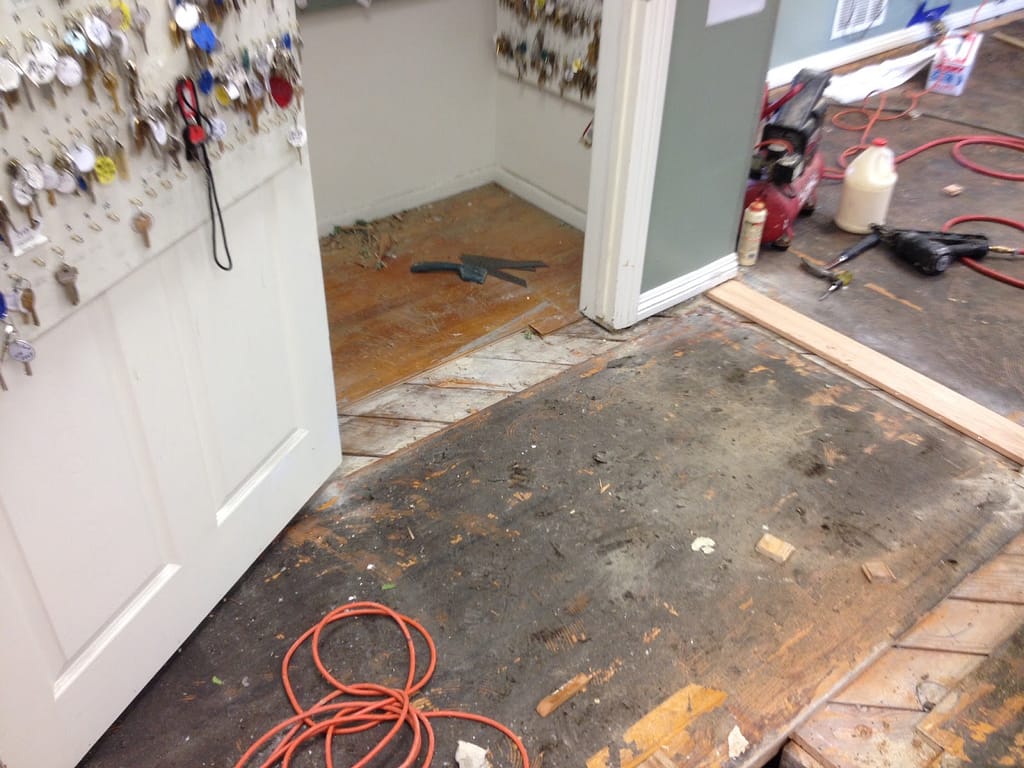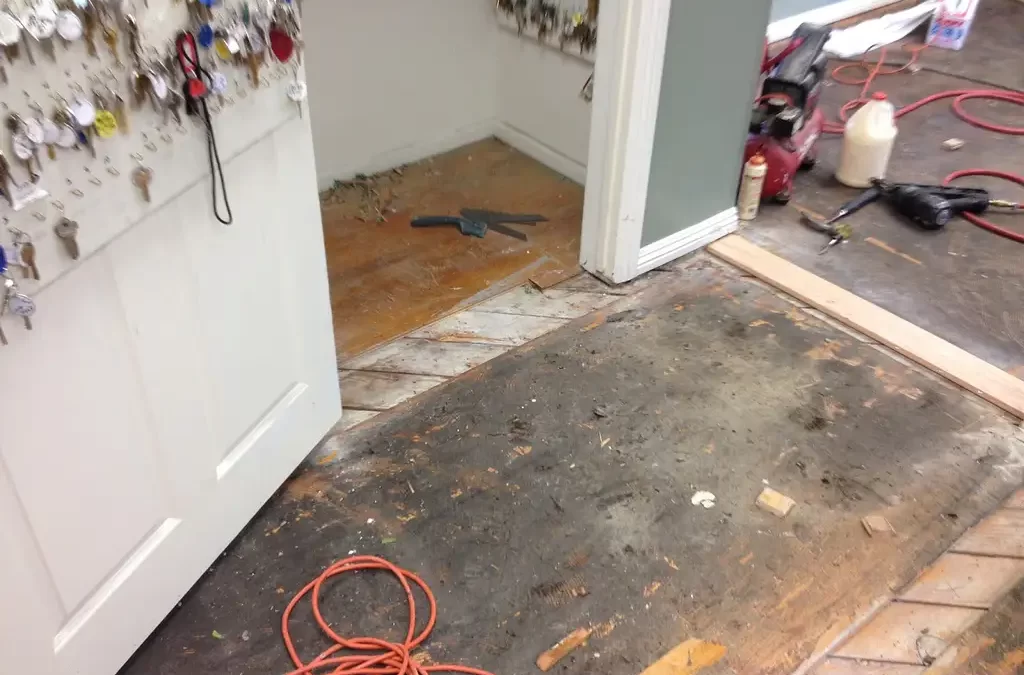Water damage on beautiful hardwood floors can be one of the homeowner’s worst nightmares. Imagine coming home after a wonderful weekend get-away only to find that your dishwasher has leaked water all over the hardwoods in your kitchen. Or sometimes the water slowly sneaks in when you least expect it, like in the entryway of your home after a long season of rain. Whether it’s a small amount or a lot, water on hardwood floors is a bad mix. But don’t worry – it can be repaired.

First off, it’s important to identify the source of the water damage and fix it completely. It would be pointless to repair the wood if you don’t seal the leak or fix the pipes from where the water is coming. Remove moisture from the floor if any is still present. If water sits on the floor long enough, the boards will lose their shape. After the floor is completely dry it should go back to being flat depending on how long the water has been laying on the floor.
Minor water damage can be a result of small leaks or standing water from a spill. It could leave you with hardwood floorboards that may be discolored and possibly swollen or cracked. To effectively remove moisture we recommend that you have a professional hardwood flooring specialist assess the situation.
It’s important to hire an expert to repair any kind of damage, no matter how minor you think it is. There is always some kind of blending process that needs to be done so that the damaged area winds up looking the same as the original floor.
To repair this kind of damage, we would begin by sanding back the affected area starting with coarse sandpaper before moving back to a finer grit. Once the area has been sanded back and the stain edges are smooth, we treat the area with a wood sealant that matches the rest of the floor. After one coat of sealant, it may be necessary to send it back even more before adding another coat.
When a lot of moisture has been absorbed from a major leak, the most common result is that the wood expands and becomes wider. Unfortunately, one of two things will happen: the floorboards buckle or cup. In either case, you are left with serious damage and an uneven floor. If your floor is cupping you will need to sand and remove the finish. This step should only be done if the other sign, buckling is not evident. There may be some minor repairs on some loose areas required but altogether as long as the wood is completely dry you can pick up and re-finish your floor.
In more serious cases, the entire floor may need to be completely replaced. It is important to keep in mind that each water damage situation is unique and requires variations to the repair process. If your floor buckled, usually this is a bad sign. Buckling means drying methods have failed because water still exists. In most cases when your wood buckles it has completely unattached itself from the sub-floor. When this happens, it is better in many professionals’ opinion to let it go and start over with new flooring. There is a point when you have to decide whether you want to try and save your flooring or simply replace it. In certain situations, you could try to save it but there is no guarantee that other problems won’t creep up as you go along.
Once your floor is flat and moisture-free again, as long as no staining has taken place we should be able to screen, fill and re-coat to fix the floor. Although, if the floor has been stained, re-finishing may be necessary. If the entire floor has water damage, you most likely want to have it sanded and refinished to get back your wood floor’s natural beauty.
Having a hardwood floor greatly increase your home’s market value. It is therefore essential to observe proper maintenance of wood floors, most especially during long rainy days where humidity increases. Water-damaged hardwood floors are best repaired by professional who has experience, and are licensed and knowledgeable on repairing water-damaged hardwood floors.

